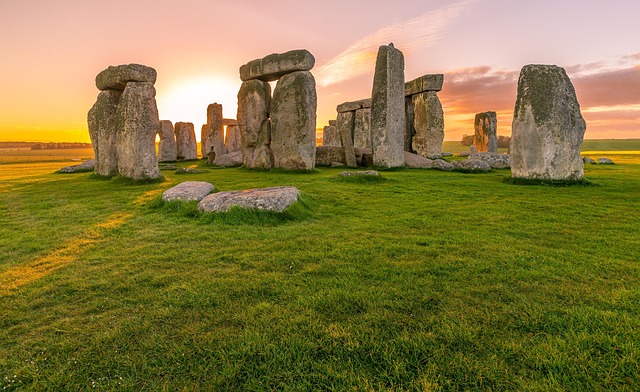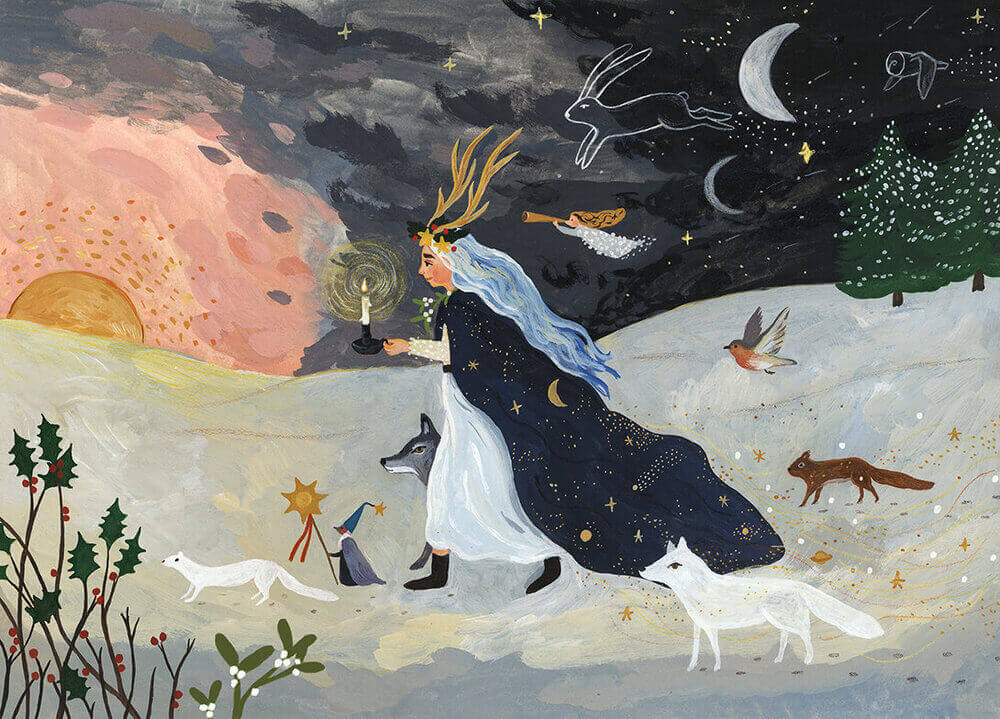It’s the third week already – the sky is gray and cloudy, days are short, nights cold, long and the rain is changing with the snow. Today, December 21st, in the Northern hemisphere is the longest night and the shortest day, as the sun is at its lowest point in the sky. We call it Winter Solstice. Experts predicted the Ursids meteor shower – up to ten meteors per hour on this day.
What are solstices?
Solstices mark the brightest and darkest days of the year. The Winter Solstice occurs when one of the poles, southern or northern, reaches the maximum heeling angle from the sun. December 21st, the North Pole is tilted farthest – 23.5 ° from the sun, so it receives the least amount of sunlight. At the North Pole there is a Winter Solstice, at the South Pole – Summer Solstice. An astronomical winter will begin in the northern hemisphere and an astronomical summer in the southern hemisphere. The Summer Solstice occurs when one of the poles, south or north, leans towards the Sun at maximum. Now the South Pole is most inclined towards the sun, so there is the longest day and the shortest night.
Sun journey
The summer and winter solstices mark the turning of the sun. The term ‘solstice’ is derived from the Latin word ‘solstitium’, meaning ‘Sun standing still’. On this day and the next few days, the sun will stand still. When it will reach the southernmost point, as seen from the Earth, it will turn around and begin to move backwards.
Starting December 26th, the daylight duration will extend by one minute daily. It will last until June 21st when the Summer Solstice occurs.
While it more often than not falls on December 21st, the exact time of the solstice varies each year. The shortest day of the year often falls on December 21st, but the modern calendar of 365 days a year – with an extra day every four years – does not correspond exactly to the solar year of 365.2422 days. The solstice can happen on December 20, 21, 22 or 23, though December 20th or 23rd solstices are rare. Last seen on December 23rd the solstice was in 1903 and will not recur until 2303.
Sun is our breadwinner
Our ancestors were very observant and lived according to the rhythms of nature. They understood the conditions for life’s emergence, existence, development, extinction, and disappearance on Earth. Therefore, for them, this day was one of the most important of the year. It is a fresh beginning and a time when the sun returns.
Mankind has always been associated with the warming rays of the sun. Without the sun, there would be no life: no one would grow, plants wouldn’t ripen their fruits. Without food, man would not survive.
How do people celebrate winter solstice?
Christmas in many of the world’s old beliefs is the day of the return of the invincible Sun. On this day, people celebrate by meeting in the community: burning bonfires, singing songs, and having fun.
Many cultures around the world celebrated the end of the old cycle and the beginning of a new one on this day. In Europe, people were lighting bonfires and dancing in circles during the winter holidays. In Scandinavia and other Nordic countries, the winter solstice is known as the Feast of Jolie, during which the log was burned. The lighting of the log symbolized the beginning of new works and dreams. In Scandinavian languages, Jul means the „circle of life” and is understood as the journey of the solar cycle. It is a celebration of reconciliation, joy and the right time to make plans for the future. Now is the time to identify, figure out your biggest dreams and goals for the new year.
Our ancestors knew the stars
Our ancestors did and planned the work of their lives according to nature without clocks and calendars. You can observe the elongation of the solar path by noting the positions of the Sun’s rise and set at the east and west horizons. The same can be observed by the positions of the stars in the vault of the sky.
It is easy to find out the length of the day by the appearance of the three stars of Orion above the eastern horizon after sunset. The arrival of these three stars after sunset shows that the Sun has already reached the point of the solstice and the day has begun to lengthen. As the days lengthen, these three stars rise higher and higher at dusk, indicating the length of the day. The constellation of Orion was a key landmark for calendar work for our ancestors. „It was called – Mowers, Cutters, Threshers, Three Virgin Spinners, Three Kings.”

The significance of the winter solstice
Our forefathers used astronomical observatories or astronomical devices to observe celestial bodies. It was useful for mating animals, sowing cereals, or monitoring winter food supplies. The winter solstice is extremely important as people have been dependent on the time of the seasons. Food savings were common in the first winter months from January to April in the northern hemisphere and from July to October in the southern hemisphere. In temperate climates, the Feast of the Solstice was the last feast before the onset of deep winter.

Let’s celebrate winter solstice
Let’s be together during the holidays season and light bonfires outside and in our hearts, light candles at home to help the sun shine longer and longer every day, and let’s light up new works, plans, and ideas to make our thoughts and dreams come true. We wish you a warm and happy winter holidays season.


